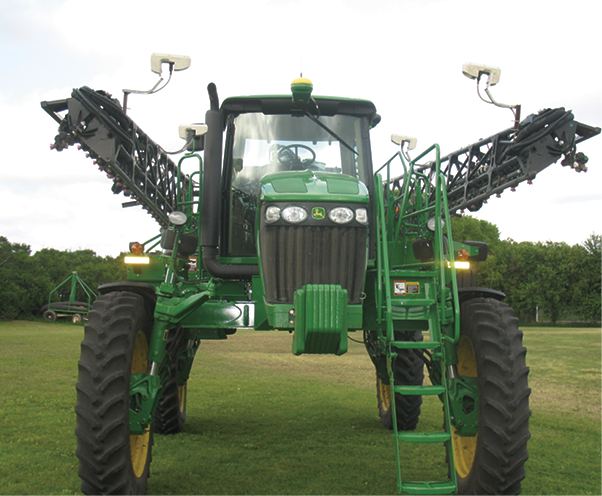Hard red spring wheat is a premium, high-protein wheat. The premium over other hard wheat classes is often seen in the higher prices at the Minneapolis grain exchange compared to Chicago or Kansas City. The higher price for Northern Plains hard red spring wheat is the result of its higher protein content. Spring wheat protein is always related to N availability to the crop in proportion to yield supported by the seasonal weather environment. The greater the N availability relative to grain yield, the greater the protein. Conversely, if soil N availability is reduced due to inadequate rate or losses due to leaching, denitrification or ammonia volatilization, grain protein is reduced.
In North Dakota, N fertilization of a spring wheat crop is almost always performed before or at planting. Nitrogen application is sometimes performed in the fall, often in the spring preplant, and a significant acreage is applied at planting or shortly afterwards. After all applications, N loss is possible due to too much water through nitrate leaching or N loss through denitrification or not enough water to move urea into the soil, resulting in ammonia volatilization.
The spring wheat market standard for protein is 14%. In most years, if farmer-delivered grain protein is less than 14%, the price the farmer receives for the grain is reduced due to the discounts for low protein. In some years, there is a premium provided by the buyer for grain with more than 14% protein. There is rarely a premium provided on protein delivered greater than 15%, with only the premium from 14% to 14.9% protein considered.
The decision on whether to supplement the spring wheat crop with a late-season N application is clouded due to the uncertainty of whether a premium and/or dockage will be present when the grain is delivered and whether supplemental N is necessary to achieve market protein. Usually, grain buyer decisions on discounts and premiums are made during the spring wheat harvest period. Previously, there has been no scientific guidance through which growers could estimate whether a post anthesis N application would be helpful.
Once a spring wheat grower predicts that a significant dockage for lower protein or premium for higher protein might be available, the next step is to determine whether supplemental N might be required.
The landmark work on in-season N application was performed by Finney et al. (1957). This work was done using urea solution, applying a urea rate at various times throughout the growing season to final wheat kernel development. The study showed that early season N application through early jointing resulted in yield increase but low protein increases. The greatest increase in protein was achieved when the urea solution was applied immediately after flowering (anthesis), just when the anthers were withering. As the grain began to develop, the benefit from urea solution application was greatly reduced. They also used the grain harvested to make bread loaves, and they concluded that the protein increases seen in their work was actual grain protein, and not some relic of the fertilizer ammonia itself.
Considerable work has been conducted at NDSU through the experiments of Schatz and Endres at Carrington, McKay at Minot, and others.
Table 1. Protein and yield with foliar N rates applied post-anthesis as UAN, Carrington 1990-91 dryland.
| Year |
Pounds N per acre |
| 0 |
15 |
30 |
45 |
60 |
| Protein, percent |
| 1990 |
12.0 |
12.3 |
12.5 |
12.6 |
13.2 |
| 1991 |
12.9 |
13.6 |
15.9 |
16.4 |
16.9 |
| Ave Protein |
12.4 |
12.9 |
14.2 |
14.5 |
15.0 |
| Ave Yield |
50.3 |
50.6 |
49.7 |
46.7 |
43.4 |
These studies indicate that the 30 pounds N-per-acre rate applied immediately post-anthesis is the most profitable N rate and timing to achieve greater spring wheat grain protein. In subsequent studies exploring N sources with “greater efficiency” compared to UAN, the higher-efficiency fertilizers applied as a foliar were no more effective than UAN and also needed to be applied at the 30 pounds N-per-acre rate to increase grain protein similar to 30 pounds N per acre as UAN. The 1 to 3 gallon-per-acre recommendations associated with these products had insignificant grain protein effects. The rate of N was too low to be effective. A full PDF report is available for download by visiting
www.ndsu.edu/agriculture/sites/default/files/2022-06/foliarNreport.pdf.


